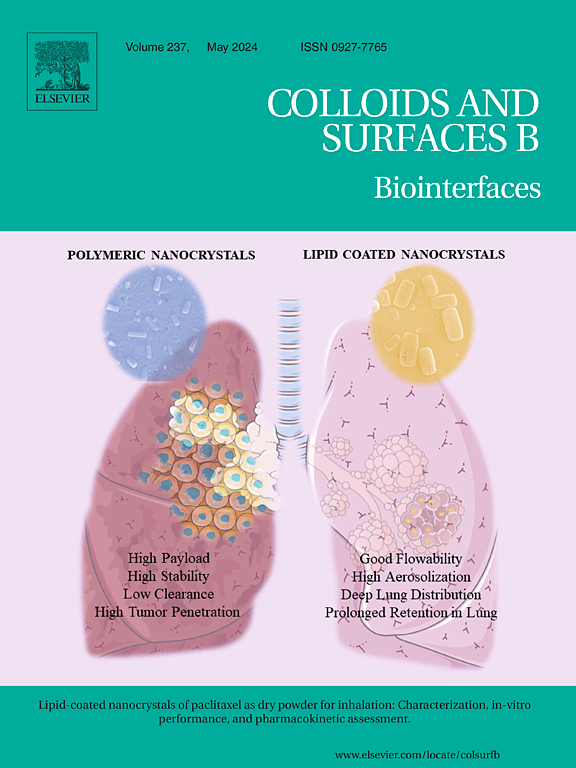Prussian blue nanocages as efficient radical scavengers and photothermal agents for reducing amyloid-beta induced neurotoxicity
IF 5.4
2区 医学
Q1 BIOPHYSICS
引用次数: 0
Abstract
The unusual accumulation of amyloid-beta 1–42 (Aβ42) is an essential pathological feature of Alzheimer’s disease (AD), and development of Aβ42 nanomodulators offers a potentially therapeutic approach to AD. Here, we report facile synthesis of the hollow mesocrystalline Prussian blue nanocages (HMPBs), which serve as versatile Aβ42 modulators. Due to the hollow nanostructures and large specific surface area, they can effectively inhibit Aβ42 aggregation by adsorption. They also exhibit robust near-infrared (NIR) photothermal effect for light-to-heat transition, which promotes the depolymerization of Aβ42 fibers. Besides, they display ROS quenching ability to scavenge hydroxyl radicals (•OH) caused by Aβ42 fibers, alleviate cellular oxidative stress, and improve cell survival. This work provides a new kind of Prussian blue nanomaterial for multimodal Aβ modulation.
普鲁士蓝纳米笼作为高效自由基清除剂和光热剂,可降低淀粉样蛋白-β诱导的神经毒性。
淀粉样蛋白-β 1-42 (Aβ42)的异常积累是阿尔茨海默病(AD)的一个基本病理特征,Aβ42纳米调节剂的开发提供了一种潜在的AD治疗方法。在这里,我们报告了中空介晶普鲁士蓝纳米笼(HMPBs)的简易合成,它可作为多功能的 Aβ42 调节剂。由于中空的纳米结构和较大的比表面积,它们可以通过吸附作用有效抑制 Aβ42 的聚集。它们还具有强大的近红外(NIR)光热效应,可实现光热转换,促进 Aβ42 纤维的解聚。此外,它们还具有淬灭 ROS 的能力,能清除 Aβ42 纤维产生的羟自由基(-OH),减轻细胞氧化应激,提高细胞存活率。这项工作为多模式 Aβ 调节提供了一种新型普鲁士蓝纳米材料。
本文章由计算机程序翻译,如有差异,请以英文原文为准。
求助全文
约1分钟内获得全文
求助全文
来源期刊

Colloids and Surfaces B: Biointerfaces
生物-材料科学:生物材料
CiteScore
11.10
自引率
3.40%
发文量
730
审稿时长
42 days
期刊介绍:
Colloids and Surfaces B: Biointerfaces is an international journal devoted to fundamental and applied research on colloid and interfacial phenomena in relation to systems of biological origin, having particular relevance to the medical, pharmaceutical, biotechnological, food and cosmetic fields.
Submissions that: (1) deal solely with biological phenomena and do not describe the physico-chemical or colloid-chemical background and/or mechanism of the phenomena, and (2) deal solely with colloid/interfacial phenomena and do not have appropriate biological content or relevance, are outside the scope of the journal and will not be considered for publication.
The journal publishes regular research papers, reviews, short communications and invited perspective articles, called BioInterface Perspectives. The BioInterface Perspective provide researchers the opportunity to review their own work, as well as provide insight into the work of others that inspired and influenced the author. Regular articles should have a maximum total length of 6,000 words. In addition, a (combined) maximum of 8 normal-sized figures and/or tables is allowed (so for instance 3 tables and 5 figures). For multiple-panel figures each set of two panels equates to one figure. Short communications should not exceed half of the above. It is required to give on the article cover page a short statistical summary of the article listing the total number of words and tables/figures.
 求助内容:
求助内容: 应助结果提醒方式:
应助结果提醒方式:


